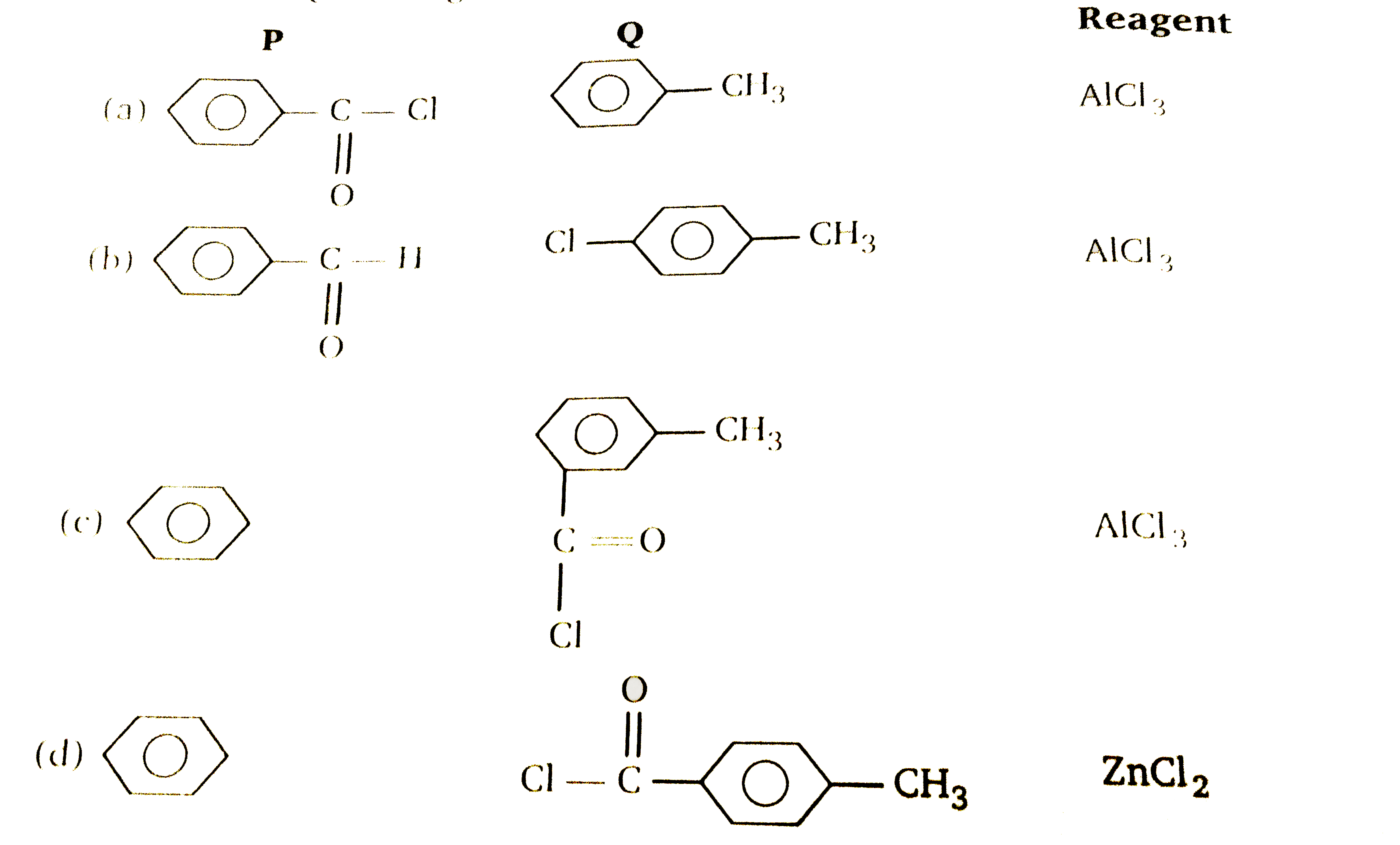Attacking reagent on benzene in the above reaction is
An electrophile i.e. Fe−Cl2
An electrophile i.e. Cl+
A nucleophile i.e. Cl−
A nucleophile i.e. FeCl−4
The correct Answer is:B
To determine the attacking reagent on benzene in the given reaction, we need to analyze the process of electrophilic aromatic substitution, specifically chlorination of benzene.
1. Identify the Reaction: The question implies a chlorination reaction involving benzene. In this type of reaction, benzene reacts with chlorine (Cl2) in the presence of a catalyst.
2. Catalyst Role: The catalyst mentioned in the reaction is FeCl3 (iron(III) chloride). This catalyst plays a crucial role in generating the electrophile from the chlorine molecule.
3. Formation of Electrophile: In the presence of FeCl3, the Cl2 molecule undergoes a reaction where one of the chlorine atoms is released as a positively charged electrophile (Cl+). The reaction can be summarized as:
Cl2+FeCl3→FeCl−4+Cl+
Here, Cl+ is the electrophile that will attack the benzene ring.
4. Electrophilic Attack: The Cl+ ion then attacks the benzene ring, resulting in the formation of a sigma complex (also known as the arenium ion or V-land complex). This intermediate is a non-aromatic structure that temporarily forms during the reaction.
5. Restoration of Aromaticity: After the formation of the sigma complex, a proton (H+) is removed from the carbon that was attacked, restoring the aromaticity of the benzene ring and resulting in the final product, chlorobenzene.
6. Conclusion: The attacking reagent on benzene in this chlorination reaction is the electrophile Cl+.
Final Answer:
The attacking reagent on benzene in the above reaction is Cl+ (chloronium ion).
---
Cl2+FeCl3→FeCl−4+Cl+
Here, Cl+ is the electrophile that will attack the benzene ring.
The attacking reagent on benzene in the above reaction is Cl+ (chloronium ion).
Topper's Solved these Questions
Similar Questions
Knowledge Check

Number of moles (x) of Grignard reagent consumed in the above reaction is :A2B3C4D5
Reagent for the above reaction will be:Ahot acidic KMnO4BCrO3,H+CCrO3, Pyridine, CH2Cl2Ddil alkaline KMnO4
Reagent (A) and (B) in above reaction are:AA=RCO3H,B=H2O2BA=RCO3H,B=HIO4CA=RCO3H,B=O3DA=O3,B=RCO3H
Statement-1:Benzene and ethene both give reactions with electrophillic reagents.
Statement-2:Benzene and ethene both have loosely bound π electrons, which can be donated to vacant orbital of the electrophilie.
View Solution
Identify appropriate reagents for the above reaction :
View SolutionWhich is limiting reagent in the above case in above question?
View SolutionConsider the following reaction

In the above reaction reagent / catalyst will be
View SolutionConsider the following reactions:

Which of the following reagents is/are used in the above conversion?
View Solution



